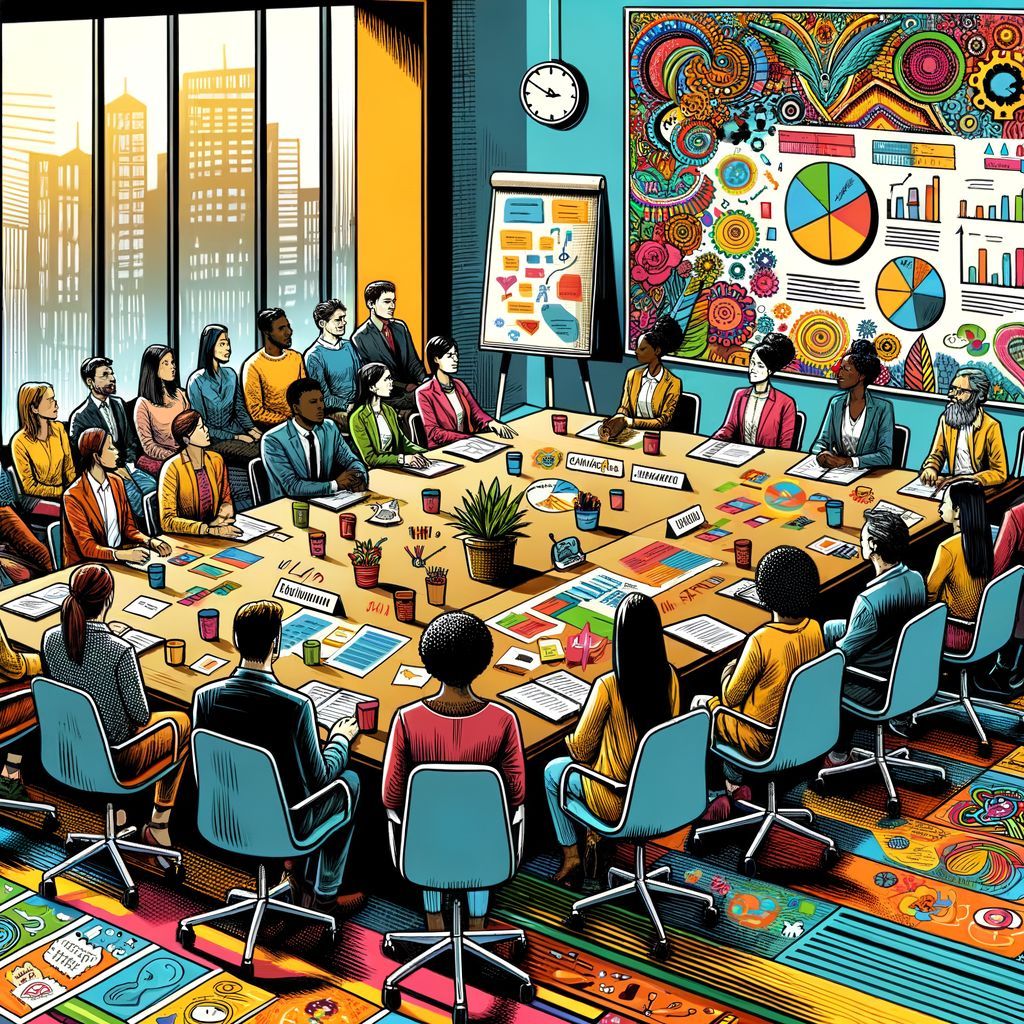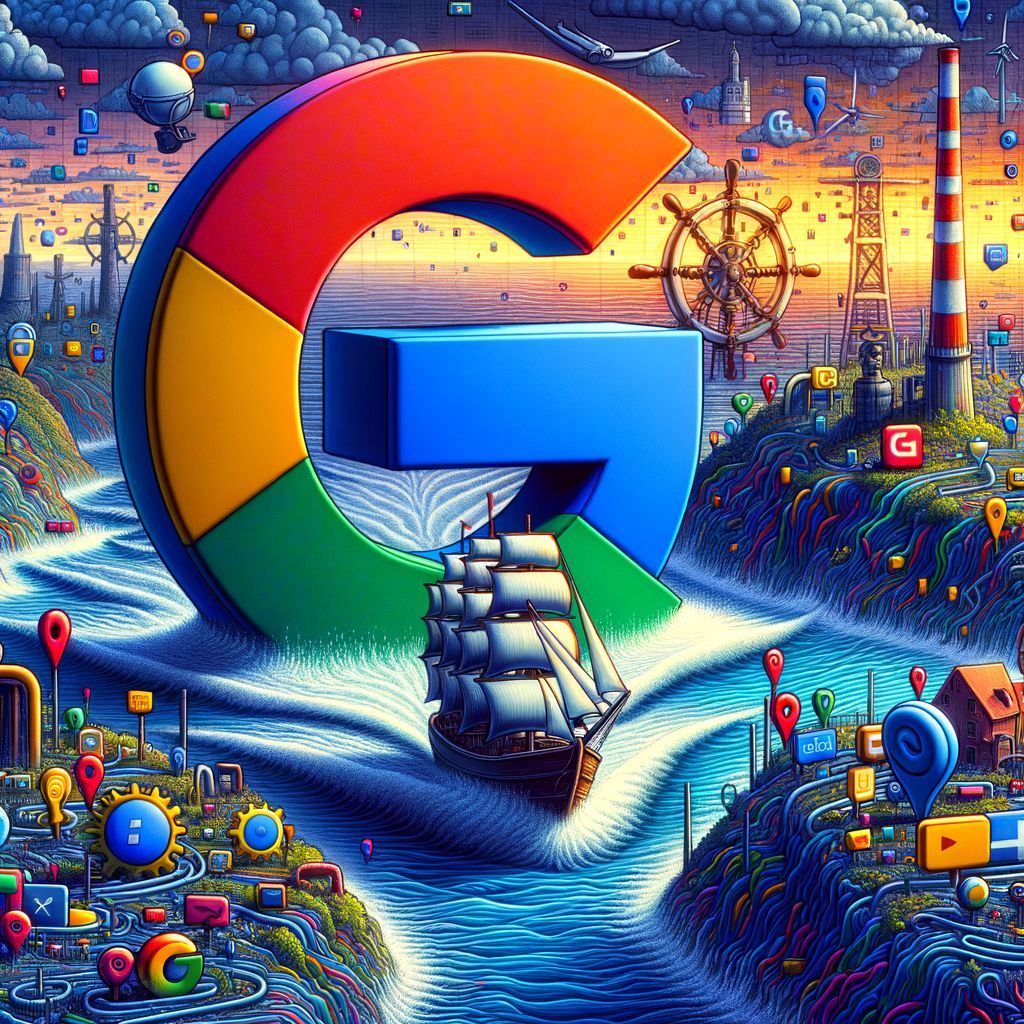

Image by DALL·E Pic: Midjourney
Editors' Note: Many Fast News images are stylised illustrations generated by Dall-E. Photorealism is not intended. View as early and evolving AI art!

Ad spend takes flight high,
Regulatory clouds loom,
Future's uncertain sight.

Global ad spend to crack US$1trn in 2024 amid regulatory uncertainty: WARC
The latest WARC data has projected global advertising expenditure to increase by 10.7% this year to a total of $1.08 trillion, marking the strongest growth rate in six years and the largest absolute rise on record, if the post-Covid recovery of 2021 (+27.9% year-on-year) is excluded.
"Our latest forecast anticipates $104bn in incremental advertising spend worldwide this year, the largest rise in history if the post-pandemic recovery year of 2021 were discounted," said Director of Data, Intelligence and Forecasting at WARC, James McDonald.
WARC's latest global projections are based on data aggregated from 100 markets worldwide. For the first time, the organisation leveraged a proprietary neural network which projects advertising investment patterns based on over two million data points, spanning macroeconomic data, media owner revenue, marketing expenses from the world's largest advertisers, media consumption trends and media cost inflation.
The new forecast, published today, represents a 0.2 percentage point (pp) upgrade on WARC's last global forecast in August.
The report also anticipates ad spend growth in the coming years, with a 7.6% increase expected next year and a 7.0% rise in 2026, culminating in a global advertising market worth $1.24 trillion. Global ad investment has more than doubled over the last decade and has grown 2.8x faster than global economic output since 2014.
According to WARC, the headline growth rate has been primarily driven by online media, however TV has also made a notable contribution. Linear TV spend is expected to end the year 1.9% higher, at $153.6bn, following two years of decline. TV has been boosted by political advertising - particularly in the US - during the fourth quarter and both the Paris Olympics and the Euro 2024 football tournament in the third. Linear TV now accounts for just 14.3% of global advertising spend, however, down from a peak of 41.3% in 2013.
Meanwhile, pure play internet, which encompasses advertising revenue among online-only businesses such as Alphabet, Amazon and Meta, is poised to grow by 14.1% to a total of $741.4bn - over two thirds (68.8%) of all ad spend.
Social media is the largest individual sector within pure play internet - and the largest advertising medium of all by extension - with a total of $252.7bn this year equivalent to 23.5% of the global ad market. Prospects for the social market have been revised upwards this year to +19.3%, owing mostly to stronger-than expected results for Facebook, Instagram and TikTok over the first nine months of the year.
However, WARC suggests the future of this growth could be under threat due to regulatory pressures on major players in the advertising industry.
"Whether this boom will sustain remains unclear, however, as 2025 presents a sliding doors moment due to heightened regulatory pressures on Google and TikTok - together a quarter of the ad market outside of China. This, alongside an increasingly challenging geopolitical climate, may spell uncertain times ahead for the businesses that rely on advertising trade," McDonald said.
One in five dollars (22.1%) spent on ads outside of China is paid to Google, and the recent Department of Justice ruling now threatens $32.9bn of potential growth over the next two years. Advertisers are also expected to spend $299bn this holiday season, with online platforms such as Amazon ($16.9bn in holiday-season ad revenue) set to be the biggest beneficiaries.
The court has stated its belief that that Google also uses its search dominance to inflate the cost per click (up by approximately 7.5% this year) and maintain superior targeting, effectively blocking competitors from offering viable alternatives.
With the ongoing uncertainty around the practicalities of the DOJ ruling, and the probability that Google will appeal it vigorously in the coming months, WARC is maintaining its growth forecast of +9.0% next year and +7.0% in 2026 for the company while the situation develops, leaving a potential $231bn ad business and $32.9bn of growth in the balance over the next two years.
Meanwhile, the holiday season is expected to give ad spend a significant boost, with advertisers globally expected to spend $299.2bn during the final quarter of the year, more than half of which will be spent during the holiday season. This represents a 10.2% rise from the previous year, up marginally (+0.2pp) from our August forecast.
In further regulatory changes, the Canadian government this month ordered TikTok Technology Canada, Inc. to wind up its Canadian operations under the Investment Canada Act, citing national security concerns. The move forces TikTok to halt sales operations in Canada but does not block Canadians' access to the app or its content creation capabilities - the app has vowed to challenge the order in court.
Globally, TikTok's audience is now almost at parity with Instagram, but users spend twice as long with TikTok. WARC suggests a ban is most likely to be to the benefit of Instagram, Snap and, to a lesser extent, YouTube thanks to its analogous Shorts format, mostly due to the migration of content creators.
Brian Wieser of Madison & Wall estimates that some C$500m annually would be up for grabs if TikTok were to exit Canada, however this scenario has not yet been factored into WARC's forecasts pending the appeal process. As it stands, WARC now expects TikTok to generate $24.6bn in advertising revenue (excl. China) this year, a rise of 25.9% from 2023 but equivalent to just 9.1% of all social advertising spend.









